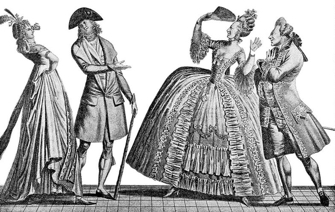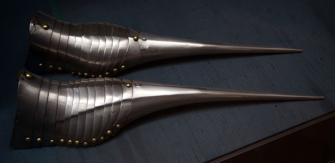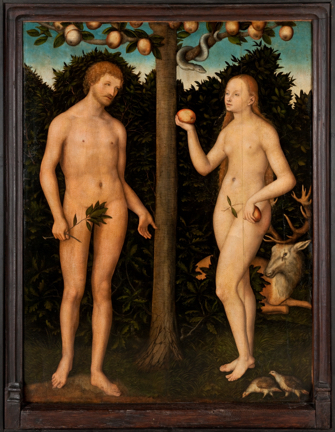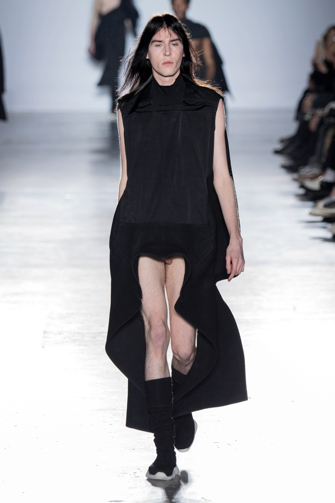
Visitors to “Tenue Correcte Exigée: Quand le Vêtement Fait Scandale” at the Musée des Arts Décoratifs are greeted with insults in many languages splashed like graffiti on the walls: “What’s that you’re wearing? A sack?” “Fashion faux pas!” “Don’t you have a mirror at home?” “Did you forget your skirt?” Then the same insults are shouted at them over a loudspeaker as they contemplate their reflection while passing through a mirror-lined hallway.
All this would lead one to expect an exhibition with an iconoclastic presentation, maybe something like the Jean Paul Gaultier show at the Grand Palais a couple of years ago, with its flashy displays and talking mannequins. Nothing of the sort. The presentation couldn’t be more classic: this is a walk through the history of fashion taboos and dos and don’ts, all nicely displayed on headless mannequins in glass cases in the museum’s dark, cramped rooms. (I’m tired of complaining about this, but once again, the labels are in small print and placed on the floor – how convenient!).
It’s a great topic, however, and there is much to enjoy in this in-depth exploration of fashion and how it evolves in fits and starts: a new style is considered shocking, scandalous, revolting, immoral, defiant, even incendiary, and is at first reviled or banned; it is eventually accepted before becoming widespread, then seen as old-hat and replaced by the next outrageous new thing.
One example is the 15th-century shoes called poulaines (crakows in English) because they supposedly originated in Poland. With their ridiculously pointy, elongated tips, they made walking difficult (perhaps a sign of prestige,

as were the bound feet of Chinese women? Or was it simply phallic?) and were at first considered diabolical. They eventually became popular enough to appear even on armor, as shown in the exhibition.
Even queens (the royal kind) could be iconoclastic, the most famous example being Marie Antoinette’s scandalously flimsy and simple muslin dresses, considered the equivalent of wearing underwear in public, which itself was popularized by another female icon, Madonna, in the 1980s.
On this subject, the show includes a legion of examples, illustrated with clothing, photos, illustrations, video and film: women wearing

men’s clothing (not just Joan of Arc and George Sand, but many others through the centuries who sought the freedom of movement denied them by most women’s styles) and more recently the zoot suit, the monokini, the miniskirt, skirts for men, pants for women, torn and safety-pinned punk

clothing, sagging trousers, hoodies and so on.
The other side of the coin is also explored: the correct dress in different times and places, e.g., for the court of Louis XIV’s Versailles.
The exhibition starts with a 16th-century painting of the naked Adam and Eve by the workshop of Lucas Cranach, so it is only

appropriate that it should end with one of Rick Owens’ peekaboo men’s tunics that let it all

hang out. Now, that’s iconoclastic! For the moment, anyway…
Favorite